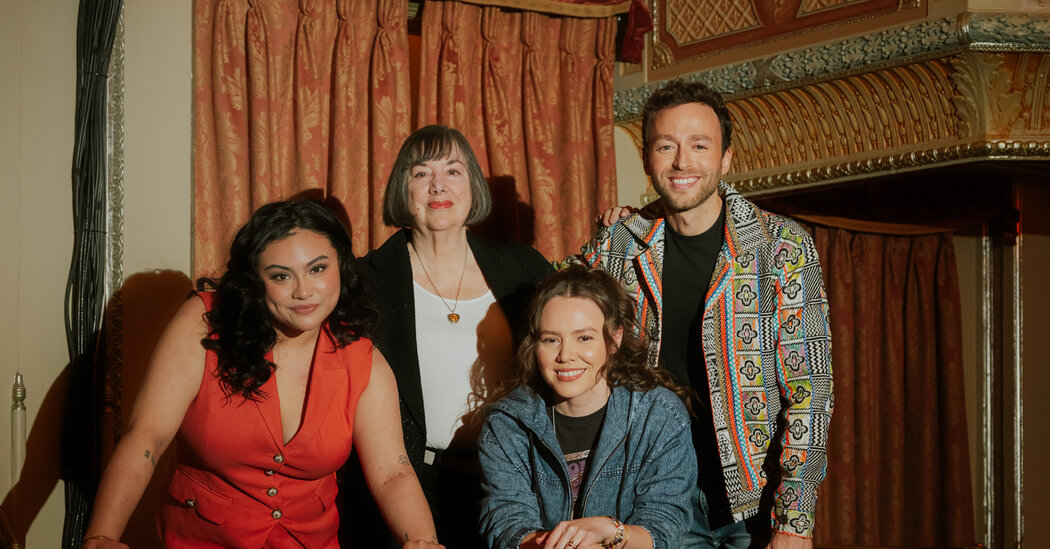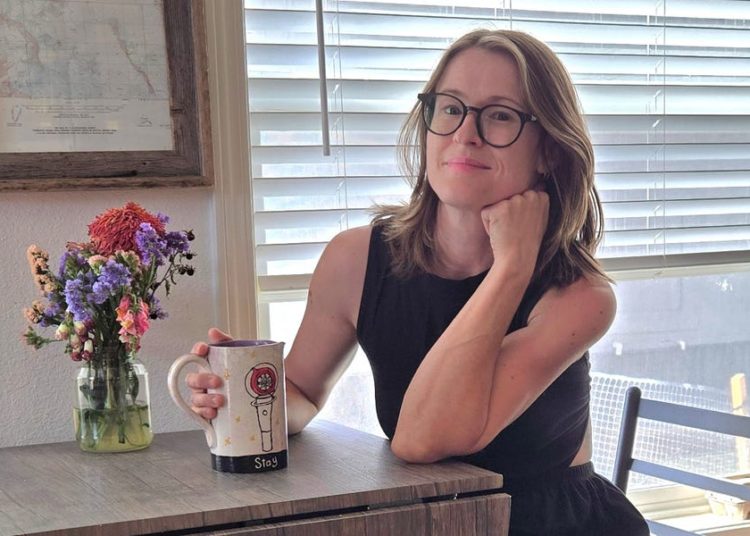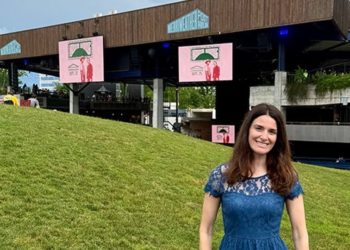Joy Huerta wasn’t so sure about musical theater.
When the director and choreographer Sergio Trujillo approached Huerta in 2019 about adapting Josefina López’s play “Real Women Have Curves” into a musical, she had her doubts.
Huerta, best known as half of the brother-and-sister pop duo Jesse & Joy, was unfamiliar with the 1990 play, and she had never seen the popular 2002 film adaptation starring America Ferrera. But then she began reading the script. And it was then, she said, that she understood why the story could be so compelling set to song.
“I remember being so excited about it, because I was like, ‘Anyone can relate to this,’” said Huerta, 38, who composed the music and wrote the lyrics with Benjamin Velez, 37, for the show, which is now a Broadway musical scheduled to open on Sunday.
Set in 1987 in the Boyle Heights neighborhood of Los Angeles, “Real Women Have Curves” explores immigrant experiences through the story of a group of Latina women working at a garment factory. The focus is on an 18-year-old who is torn between staying home to help her undocumented family members and relocating to New York to attend Columbia University on a scholarship. The production had an earlier run in 2023 at the American Repertory Theater in Cambridge, Mass.
Shortly after performances began on Broadway this month, Huerta, Velez and Lisa Loomer, who wrote the book with Nell Benjamin, discussed their inspirations and approach to adapting the story for the stage. In a separate conversation, Tatianna Córdoba, 25, who stars as the musical’s young heroine, Ana García, spoke about making her Broadway debut in a role she identifies with so closely. Here are five things to know about the production.
It all started with a diary.
More than a decade before “Real Women Have Curves” made waves in 2002 as a film, it began life as the diary entries of López, an undocumented Chicana teenager who recorded her experiences working in a sewing factory in Los Angeles’s Boyle Heights neighborhood.
When she was just 18, she expanded on those entries and turned them into a play. “Real Women Have Curves” had an initial production in San Francisco in 1990, and has been staged many times since. López (and George LaVoo) wrote the screenplay for the movie, which starred a young America Ferrera in her feature film debut.
Loomer, who also lived near Boyle Heights in the 1980s, pulled from the original works and added some new characters. “The movie is quite different from the play, and the musical is quite different from both of them,” she said. “But they have the same DNA.”
The show celebrates body positivity.
Since body positivity is a relatively new concept, Loomer had to find a way to write about the story’s celebrated appreciation of full-figured bodies for a contemporary audience. One of the musical’s characters, Ana’s blunt, family-first mother, Carmen, is constantly criticizing her daughter for her weight in the film.
“In terms of Carmen, I felt she would be better understood if we left it in 1987,” Loomer said.
For the musical, she softened the edges of the character, who is played by Justina Machado on Broadway. (Lupe Ontiveros played her in the film.) In short: Less fat-shaming, more back story to help the audience understand the generational and cultural roots of Carmen’s harsh approach. (Though some jabs remain, such as telling Ana she could stand to skip a meal.)
“You want to hate her for what she just said, but at the same time, she’s not saying it in a way that she’s meaning to put Ana down,” Huerta said. “She’s thinking as she speaks, because that’s where she comes from.”
Spanish is sprinkled throughout.
It was a delicate balancing act, Loomer said: They wanted audience members who do not speak Spanish to be able to follow the story, but they also wanted to add as much authenticity as possible.
“They wouldn’t speak in English to each other at home, and certainly not in the factory,” she said. “So you have to give the feel of Spanish — the rhythms — and yet the Anglo audience has to understand it.”
Sixteen of the show’s 19 cast members are of Latino or Hispanic descent. Most are making their Broadway debuts. “I just love to see how, when that curtain comes up every night, we see people that we feel like, ‘Oh my God. That could be me onstage.’ And ultimately, that could be my aunt, or my cousin, or my tía,” Huerta said of the cast.
During the show’s Cambridge run, they tested how much Spanish to include in the songs. “We never wanted the amount of Spanish to take people out of the story,” Velez said. “So it’s been a kind of a dance as we figure out the right balance.”
Illegal immigration is a theme.
The musical is set in the summer of 1987, when a Reagan-era amnesty program was in place for longtime undocumented immigrants. (The playwright became a legal citizen through this program.) In a change from the film and the play, Ana is the only U.S. citizen among her family and co-workers. The other employees at the factory are undocumented as are her older sister, Estela (Florencia Cuenca), who owns the factory, and their mother, Carmen, who also works there.
“I made this change because it increases her family’s need for Ana to stay,” Loomer said. “It also increases the responsibility and guilt Ana feels when she wants to leave and pursue her own dreams.”
Loomer also expanded the cast of undocumented characters, adding Guatemalan and Salvadoran women, including the sweet and vulnerable 17-year-old Indigenous Guatemalan refugee Itzel (Aline Mayagoitia), who sings about rising above life’s challenges in the song “If I Were a Bird.”
“The beauty sometimes about doing a play that’s set in the past, it shows you what hasn’t changed,” said Loomer, who has spent a majority of her four-decade career writing plays that deal with the experiences of Latinas and immigrant characters. “At times, it allows you to see the present even more painfully.”
The show is personal for the lead actress.
When Tatianna Córdoba, who is making her Broadway debut as Ana, read the script for the musical, the family dynamics resonated with her.
“A lot of the mother-daughter exchanges that Justina and I have in the show remind me of my abuelita so much,” said Córdoba, who grew up in Los Angeles and whose parents are of Costa Rican and Filipino descent. “There’s that motherly judgment, but also love.”
The discussions around body image also felt true to life, said Córdoba, who studied ballet when she was younger before feeling pressure to quit. “I realized very quickly, when puberty hit, that my body was changing in ways that a lot of my ballet friends’ bodies were not,” she said.
One thing she wishes she’d had as a teenager: Her character’s self-assurance.
“Ana is who I wish was at 18,” she said. “She just has this belief in herself, this confidence in her body that I really wish I had at that age. She’s far more concerned about everything else going on with her — her brain, her hopes and her desires.”
She loves being part of a scene in Act II when the fuller-figured women in the boiling-hot factory strip down to their undergarments, reveling in their bodies. It’s been receiving mid-show standing ovations.
“There’s something infectious about just watching other people be joyful, about watching people being brave,” she said. “I think that’s what makes people stand up and clap — they feel really empowered, and they feel loved in that moment.”
Sarah Bahr writes about culture and style for The Times.
The post ‘Real Women Have Curves’ Is Now a Broadway Show. Here Are 5 Things to Know. appeared first on New York Times.




